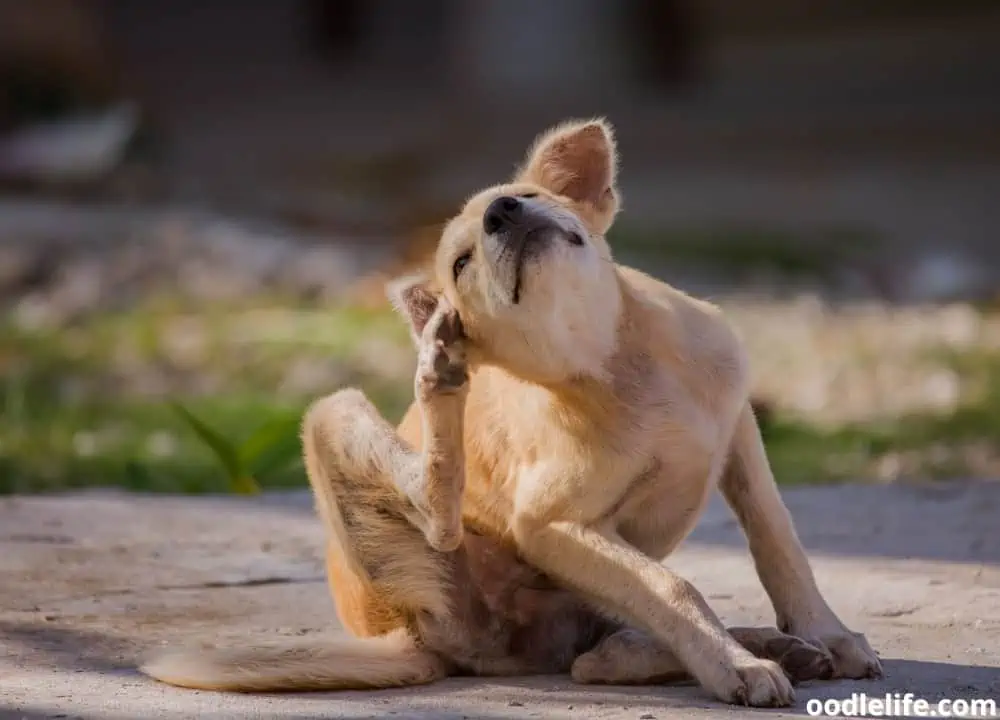How Fast Does Dog Hair Grow? [Science Explained]
Like people, different breeds of dogs have various coats. Depending on the dog, their fur will grow differently. For instance, some dogs’ coats will stay the same length and never need to be cut.
Others, however, regularly need to be trimmed to prevent their coat from matting.

Although we refer to all dog coats as fur, some dogs have a coat more like hair rather than fur. A hairlike coat behaves differently than fur and will need different grooming and brushing routine than dogs who have fur coats.
Dogs with hair tend to shed less and be more allergy-friendly.
The Cycle of Growth
Dog fur tends to follow a four-stage process for growth, and it takes approximately six weeks for your dog’s hair to resume growing after being cut.

After that, the dog’s fur will enter into the first of its four-stage process:
Anagen Stage
This is the stage in which your dog’s fur is actively growing. The fur will continue to grow until it reaches its genetically predetermined length. This length varies across breeds, with Poodles having an anagen phase of over a year or two and other breeds having a phase around a month or so.
Catagen Stage
At this stage, your dog’s fur will stop growing and the coat will be full. In breeds whose anagen stage is long, the coat will probably need to be cut before it reaches this stage. Otherwise, the coat mats easily and becomes uncomfortable for your dog.
Telogen Stage
At this point, your dog’s fur is at a standstill and there’s no extra maintenance needed.
Exogen Stage
This is the stage where your dog begins to shed to prepare for the next anagen phase. In some cases, the telogen stage and the exogen stage are so close together that your dog may not even seem like it has a telogen stage.
Growth Rate
A dog’s growth rate depends on the breed. Although the growth cycle can be measured from anywhere between thirty days to a year or so, a dog’s measurable growth rate varies from dog to dog.
Humans have varied growth in their hair and so do dogs. Several factors influence the growth rate in dogs, such as diet and health. Other factors include the age of the dog.
Younger dogs’ hair will grow quicker than older dogs, and puppies’ fur takes a year to transition into adult dog hair.

Fur vs. Hair
These two terms are used interchangeably, and in reality, there is no chemical difference between the two. However, hair grows at a different rate and has a different feel and grooming needs than fur.
Most dogs with a fur coat have two coats: a soft protective undercoat and an outer coat with coarser guard hairs. Most dogs in the working group or herding group have this kind of coat. Since they work in chilly or adverse conditions, their double coat protects them from extreme weather.
Dogs with a more hairlike coat will only have one layer, and it will feel much more silky and soft to the touch than dogs with two coats. The hair has a longer growing cycle and is most often seen in breeds such as the Poodle, Portuguese Water Dog, and Poodle mixes. These Poodle mixes are often called Doodles.
Dogs with a hairlike coat will also shed much less than dogs with a fur coat. These make them popular choices for people who tend to suffer from allergies.

Dog Hair Loss
For some reason, dogs will lose their fur in large chunks unrelated to the shedding season. Some breeds, like Siberian Huskies, will have a “blowout” in which they lose much of their fur during warm months.
However, if your dog’s fur begins to come out in large chunks that show bald spots or raw patches, it could be due to an underlying issue. If you suspect your dog has any of the following issues, be sure to contact your veterinarian.
Medical Issues
A cause for fur loss could be a thyroid problem. Since the thyroid is home to hormones that influence dog hair growth, then an issue with the thyroid could cause hair loss.
Other hormonal imbalances may also cause hair loss, such as vitamin deficiencies. Your dog may need some medical tests to determine any medical issues.

Allergies
Allergies can be a huge cause of hair loss. Like humans, dogs can suffer from seasonal allergies during the spring and summer. Sometimes these allergies cause intense licking and chewing in places, which can result in hair loss as well.
Dogs can also be allergic to certain medications or even household items. Food allergies are also common in dogs. To determine if your dog is allergic to a particular food, try a food elimination diet.
Remove any suspected allergens, then add one food at a time. If your dog’s hair begins to fall out, you know you’ve found the problematic food.

Surgery
Veterinarian visits and surgeries can strain your dog, and the stress from such an operation can cause your dog’s hair to fall out.
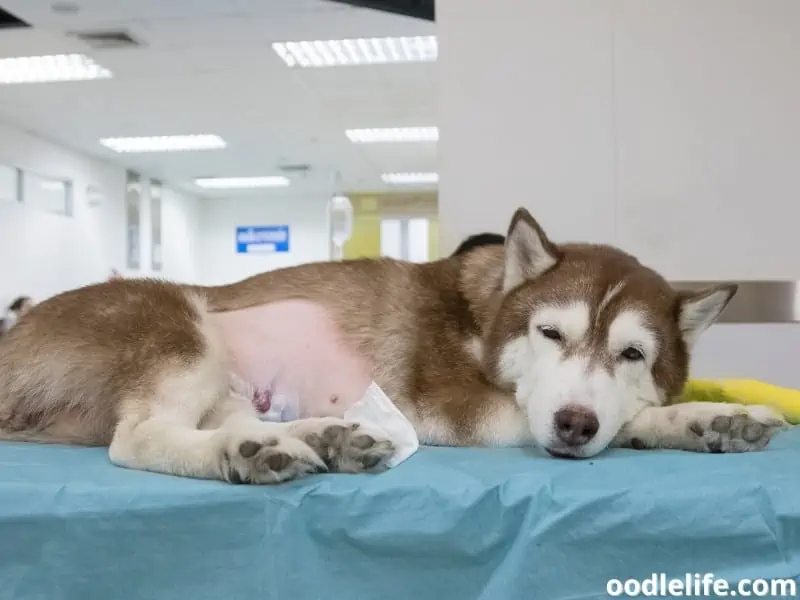
Other Issues
Sometimes hair loss can mean your dog needs a groom. Other times hair loss can be a result of an accident or maybe that piece of fur got stuck in a fence and got pulled out.
In some cases, fur loss can be a result of a flea or parasite infestation. Your dog scratching or biting at the itchy flea bites can irritate the skin and cause hair loss.
If your dog’s hair continuously falls out or like your dog is in pain, contact your veterinarian immediately.
Keeping Your Dog’s Fur Healthy
Keeping your dog’s fur healthy is a simple but effective way of showing care for your dog. Maintaining a healthy, shiny look for your dog is easy to obtain in a few simple steps.
Bathing
Regularly bathing your dog can help your dog’s coat to stay dirt and grime-free. Be sure to pick out shampoos that are pet-friendly and gentle on your dog’s skin. Bathing your dog too often will strip the natural oils from its coat, however, a thorough bath twice every month is generally recommended for indoor dogs.
Dogs with water-resistant coats may take longer to bathe than those without water-resistant coats. You’ll have to be extra attentive to make sure the soap penetrates both the topcoat and the undercoat layers.
Every once in a while you can even give your dog an oatmeal bath. Oatmeal shampoos are easy to find, and the oatmeal helps alleviate skin itchiness and irritations. You can also make your own oatmeal mixture.
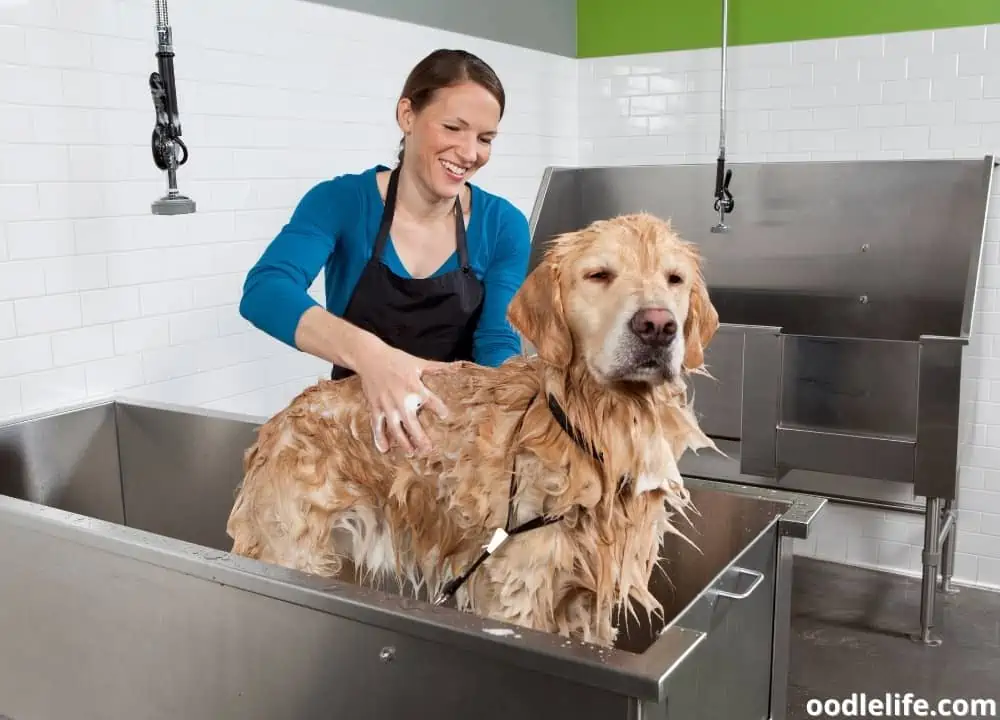
Brushing
Brushing, unlike bathing, can be done daily. Brushing is especially important if your dog has a heavier coat like a Husky or Rough Collie. Brushing not only prevents mats and tangles from occurring, which can be painful and dirt-collecting, but it allows you an opportunity to examine your dog’s body for any irregularities such as skin sores or rashes.
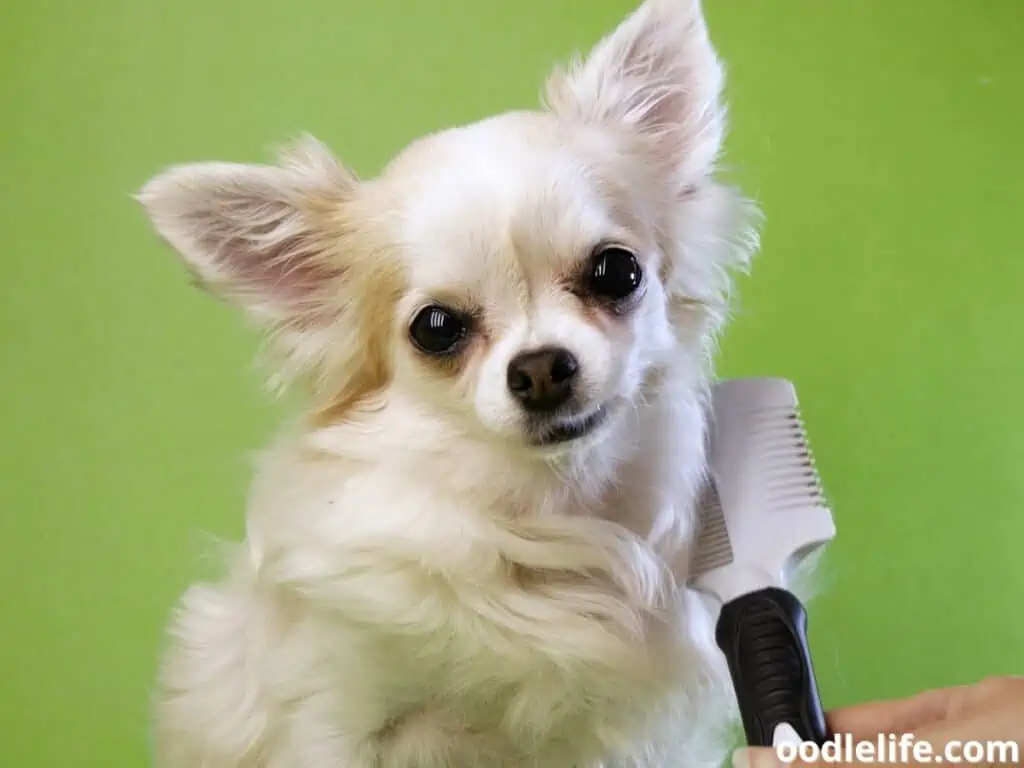
Diet
A large part of your dog’s skin and fur health is tied to diet. Certain foods have different nutritional components that can promote healthy skin and fur. Salmon-based diets can help with healthy skin in dogs.
- Essential fatty acids: Most commercial dog food has most of the essential fatty acids, so it’s difficult for dogs to have a nutritional deficiency. However, occasionally a low-fat diet can be detrimental to your dog’s coat. Puppies in particular who get fed low-fat diets tend to have poorly-developed fur and skin.
- Omega-6: This oil is in supplements, but oils such as safflower oil and sunflower oil work well. If your dog is small, you can stir a teaspoon into their food. For a larger dog, a tablespoon works fine.
- Omega-3: This oil is in supplements such as fish oil. However, make sure these supplements are not given in excess, as they can be too much for your dog. Be sure to follow the labeling and suggested dosage.
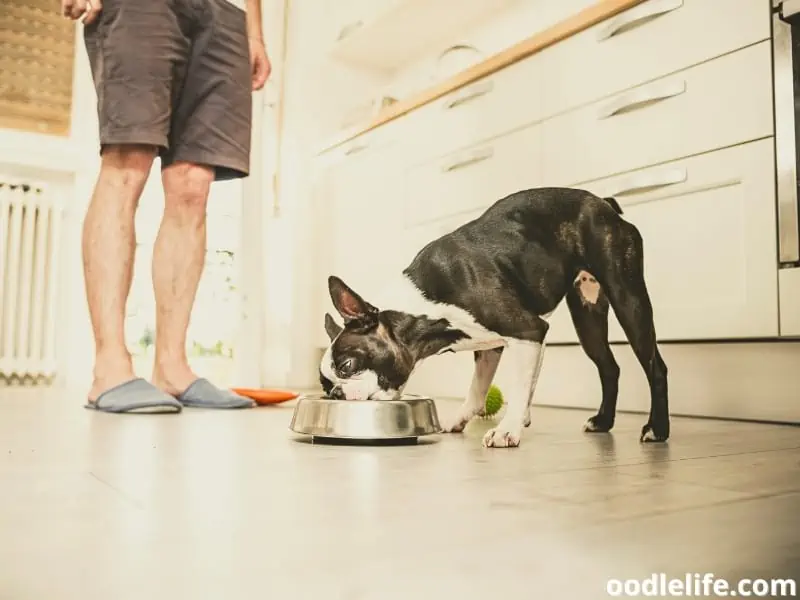
Healthy Treats
In addition to giving your dog a balanced diet, it’s important to give your dog healthy treats. Treats such as carrots or apples are fun yet healthy treats that aren’t high in fat content or processed ingredients.
Opt for organic treats with no dyes when giving your dog hard or crunchy treats. Healthy snacks promote healthy skin and keep your dog from gaining unnecessary weight.

In Conclusion
There’s no cut-and-dried answer to the growth rate for a dog’s fur. Each dog will go through the four stages of growth and will eventually need thorough grooming to keep its coat looking healthy.
If you suspect that your dog’s skin or coat may be adversely affected by an underlying condition, then it’s important to take your dog to the veterinarian and get it checked out. Usually, skin conditions are easy to treat and will clear up after the correct medication and at-home care.
You can further promote a healthy, vibrant coat by maintaining a healthy diet for your dog and making sure it receives regular brushing and bathing. Depending on your breed, be sure to research the best coat care for your dog.
